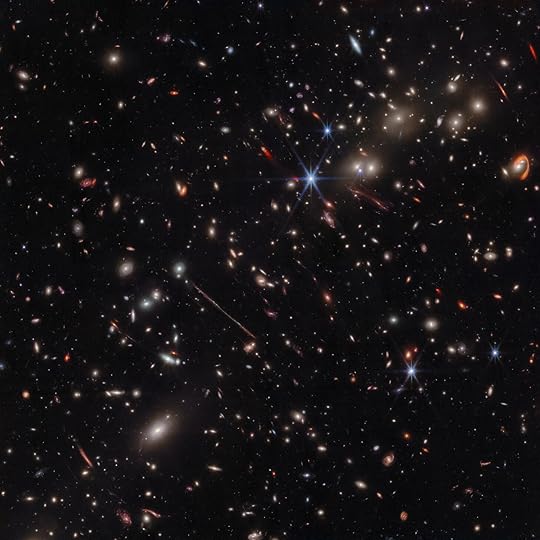Unimaginably big does not begin to describe...
A new episode of The Unknown documentary series on Netflix describes the technical challenge of, and the stunning results from, the James Webb Telescope. Besides its significance in the history of science, perhaps the most breathtaking takeaway is at the level of society and geopolitics. The NASA Next-Generation Space Telescope (NGST, a joint mega-project with Europe and Canada) is the most complex space mission ever attempted, many times more complex than the Moon landings. The work effort took more than 30 years and employed more than 10,000 team members. In the film, project scientist Thomas Zurbuchen comments that not only did he have panics of doubt during the project, it was fraught (as human efforts will be) with team disagreements, personnel issues, never-attempted and just unlucky engineering challenges, and interruptions of its $10B funding. His point being—not just what a wonderful technical achievement it is—but that if a [government-sponsored] effort of this difficulty can succeed (as it has), we [people acting in groups] should be able to solve anything.
The telescope is now “parked” a million miles from Earth at a stable LaGrange point. That’s a place where the gravitational pull from surrounding bodies is relatively balanced. The satellite therefore should be able to remain there with minimal fuel expenditure for repositioning. Duration of the mission is expected to be at least 5-10 years.
Unknown: Cosmic Time Machine (Netflix) link to the episode

Webb’s infrared image of the galaxy cluster El Gordo (“the Fat One”) reveals hundreds of galaxies, some never before seen at this level of detail. El Gordo acts as a gravitational lens, distorting and magnifying the light from distant background galaxies. Two of the most prominent features in the image include the Thin One, located just below and left of the image center, and the Fishhook, a red swoosh at upper right. Both are lensed background galaxies. (NASA STSci)
Stunning to me, as much as I’ve studied astronomy as a layman, “beyond imagining” doesn’t begin to describe the size of the universe. In one of the film’s insider scenes, NASA officials are looking at a poster-sized print of an early deep-space photo from the telescope. NASA Director Bill Nelson is preparing to present it to President Biden, who will show the image to a national audience. Nelson wants to know how he should describe the picture to the President. A project scientist answers that most of the bright specks on the black field aren’t stars—they’re entire galaxies. In that shot, there were about 7,000 of them. Then he adds—the relative size of that image compared to the whole sky is a grain of sand!
I have serious, educated friends who are nevertheless literalist Bible scholars. They insist Earth is the only place where God’s creatures exist. I doubt whether that belief will survive the next generation, among any of us.
I have my grandmother’s set of The Standard American Encyclopedia, copyright 1937. Turning to the entry “Universe” in Volume 13 TER-UZH, I read that “the diameter of the known universe is 600 million light years,” containing 75 million galaxies. I was actually surprised that a book of this vintage would describe a cosmos that large. When I was in elementary school in the 1950s, our teachers talked about the solar system and a few stars beyond.
In the generation of Webb, the size of the universe is estimated at 28 billion light years with 2 trillion galaxies.
The age of the universe has been calculated at 13.8 billion years since the Big Bang. The Webb telescope should be able to “see” the formation of stars at 13+ billion light-years away—baby snapshots, you might say.
Past that distance, presumably no device will ever be able to see anything. That’s the event horizon.
The light from objects out there has not had time to reach us yet!

Until August 14 from ebook distributors worldwide, Kindle and EPUB.



